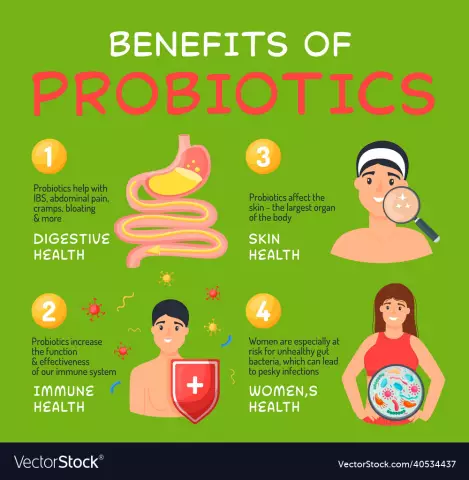- Author Rachel Wainwright [email protected].
- Public 2023-12-15 07:39.
- Last modified 2025-11-02 20:14.
Teofedrin-N
Teofedrin-N: instructions for use and reviews
- 1. Release form and composition
- 2. Pharmacological properties
- 3. Indications for use
- 4. Contraindications
- 5. Method of application and dosage
- 6. Side effects
- 7. Overdose
- 8. Special instructions
- 9. Application during pregnancy and lactation
- 10. Use in childhood
- 11. In case of impaired renal function
- 12. For violations of liver function
- 13. Drug interactions
- 14. Analogs
- 15. Terms and conditions of storage
- 16. Terms of dispensing from pharmacies
- 17. Reviews
- 18. Price in pharmacies
Latin name: Theophedrin-N
ATX code: R03DA54
Active ingredient: belladonna leaves extract (Belladonna folia extract), ephedrine hydrochloride (Ephedrine hydrochloride), cytisine (Cytisine), phenobarbital (Phenobarbital), theophylline (Theophylline), paracetamol (Paracetamol), caffeine (Caffeine)
Manufacturer: JSC "Moskhimfarmpreparaty im. N. A. Semashko "(Russia)
Description and photo update: 2019-08-07

Teofedrin-N is a combined bronchodilatory drug with bronchodilator and antispasmodic effect.
Release form and composition
The drug is available in the form of tablets: flat-cylindrical, with a chamfer and a dividing line, white with a gray or beige tint, there are inclusions (10 pcs. In blisters, 1 or 2 packs in a cardboard box and instructions for the use of Teofedrin-N).
1 tablet contains:
- active ingredients: cytisine - 0.1 mg, thick extract of belladonna - 3 mg, phenobarbital - 20 mg, ephedrine hydrochloride - 20 mg, caffeine - 50 mg, theophylline - 100 mg, paracetamol - 200 mg;
- auxiliary components: polyvinylpyrrolidone (povidone), potato starch, calcium stearate, stearic acid.
Pharmacological properties
Pharmacodynamics
Teofedrin-N is a combined drug with bronchodilator and antispasmodic effects. The bronchodilating effect of the drug is due to the optimal combination of its active components.
The combination of theophylline and caffeine, which are methylxanthine derivatives, with ephedrine (sympathomimetic) and atropine (m-anticholinergic - the main active principle of belladonna extract) provides the drug with a bronchodilatory effect.
Phenobarbital helps to eliminate the excitation of the central nervous system. Paracetamol provides antipyretic and analgesic effects of the drug.
The drug causes an increase in the lumen of the bronchi, expansion of the vessels of the lungs, and a decrease in pressure in the pulmonary circulation. Against the background of stimulating the respiratory center, the coronary vessels expand, the frequency and strength of heart contractions increase. Teofedrin-N has an effect on an increase in renal blood flow, causes a moderate diuretic effect.
Pharmacokinetics
After taking Teofedrin-N inside, paracetamol and ephedrine are well absorbed from the gastrointestinal tract. The maximum concentration (C max) in the blood plasma of paracetamol is reached within 1 hour, theophylline - 2.5 hours and is 20 μg / ml.
The half-life (T 1/2) of unchanged paracetamol from blood plasma is about 3 hours, theophylline - 11 hours. In case of overdose, liver and / or kidney failure, T 1/2 of paracetamol increases.
Paracetamol is excreted in the form of metabolites within 1-4 hours, mainly in the urine.
The protein binding of atropine is 18% of the oral dose.
Through the kidneys, 50% of atropine is excreted unchanged.
Ephedrine creates and maintains the required therapeutic plasma level. It is metabolized in the liver, excreted mainly through the kidneys.
Indications for use
The use of Teofedrin-N is indicated in the treatment of bronchial asthma, chronic obstructive bronchitis, emphysema of the lungs and other respiratory diseases, which are accompanied by bronchospasm, as an adjuvant.
Contraindications
Absolute:
- angina pectoris;
- chronic heart failure;
- heart rhythm disturbances;
- violation of the coronary circulation;
- arterial hypertension;
- angle-closure glaucoma;
- hyperthyroidism;
- convulsive conditions, including epilepsy;
- hyperplasia of the prostate;
- period of pregnancy;
- breast-feeding;
- age up to 18 years;
- hypersensitivity to the components in Teofedrin-N.
The drug should be taken with caution in patients with renal or hepatic insufficiency, urination disorders, diabetes mellitus, and also predisposed to the development of drug dependence.
Teofedrin-N, instructions for use: method and dosage
Teofedrin-N tablets are taken orally after meals.
Recommended dosage:
- relief of attacks of bronchial asthma: 2 pcs. once as an aid. If necessary, it is possible to use 1 pc. 2-3 times a day. The maximum daily dose is 3 pcs.;
- prevention of bronchospasm: 1 / 2-1 pcs. Once a day, preferably in the morning or at lunchtime.
The duration of the course of admission depends on the clinical indications, the characteristics of the course of the disease and the individual therapeutic effect.
Side effects
In isolated cases, the following reactions may occur from the side of systems and organs:
- cardiovascular system: heart rhythm disturbances, tachycardia;
- digestive system: nausea, heartburn, decreased appetite, vomiting;
- nervous system: insomnia, sleep disturbance, mental agitation, headache, tremor;
- others: allergic reactions, dry mouth, urinary retention, increased sweating.
Overdose
Symptoms: Ultra-high doses of Theofedrine-N can cause stomach pain, nausea, vomiting, insomnia, blurred vision, epileptoid seizures.
In case of an overdose, it is necessary to take into account the symptoms of acute poisoning of individual active components of the drug. The use of high doses of ephedrine causes an increase in blood glucose levels. It should be borne in mind that the lethal dose of oral ephedrine is 1 g.
The development of hepatonecrosis, an increase in the activity of hepatic transaminases, an increase in prothrombin time, due to an overdose of paracetamol, can occur only after a single dose of it in doses over 10-15 g.
Treatment: immediate gastric lavage, artificial vomiting, the appointment of symptomatic therapy. Careful monitoring of the patient's condition is required.
special instructions
Taking the drug in the evening can cause disturbance of night sleep, therefore it is recommended to take the tablets in the morning.
The simultaneous use of alcoholic beverages is contraindicated. In persons prone to regular alcohol consumption, the tablets have a toxic effect on the liver.
It is not recommended to use Teofedrin-N for the treatment of patients with diabetes mellitus. This is due to the presence of ephedrine in the tablets, which, if the therapeutic doses are exceeded, can potentiate the metabolism, causing an increase in blood glucose levels.
Influence on the ability to drive vehicles and complex mechanisms
During the period of using Teofedrin-N, patients are advised to be careful when driving and performing other potentially hazardous activities, since the drug contains components that can cause a decrease in the speed of psychomotor reactions and impair concentration.
Application during pregnancy and lactation
The appointment of Teofedrin-N during gestation and breastfeeding is contraindicated.
Pediatric use
The appointment of Teofedrin-N for the treatment of patients under the age of 18 is contraindicated.
With impaired renal function
It is recommended to take Teofedrin-N with caution in case of renal failure.
For violations of liver function
Teofedrin-N should be used with caution in patients with hepatic insufficiency.
Drug interactions
Due to the content of potent components in Teofedrin-N during the period of its use, it is necessary to agree with the attending physician to take any other medicines.
It should be borne in mind that the simultaneous use of the drug with carbamazepine, furosemide, beta-blockers (propranolol), cimetidine, verapamil, indirect anticoagulants (fenindion, acenocoumarol), antibiotics (macrolides, lincomycin), glucocorticosteroids, cicinophoramine inhibitors MAO) or hormonal contraceptives causes an increase in the concentration of theophylline in the blood, increasing the risk of developing its unwanted effects.
Atropine helps to weaken the action of anticholinesterase agents and m-cholinomimetics.
The risk of developing hepatotoxic effects due to paracetamol increases with concomitant therapy with phenytoin, carbamazepine, barbiturates, rifampicin, zidovudine and other inducers of liver microsomal enzymes. Paracetamol potentiates the effect of anticoagulants.
The presence of ephedrine in Teofedrin-N helps to weaken the action of drugs that depress the central nervous system, including opioid analgesics. The combination of ephedrine with MAO inhibitors can cause severe hypertensive crises, non-selective beta-blockers - a decrease in the bronchodilator effect of the drug.
Analogs
Analogues of Teofedrin-N are: Antastman, Insanovin, Neo-Teofedrin, Neo-Fedrin, Teofedrin, Efatin.
Terms and conditions of storage
Keep out of the reach of children.
Store at temperatures up to 25 ° C, protected from moisture and light.
Shelf life is 2 years.
Terms of dispensing from pharmacies
Dispensed by prescription.
Reviews about Teofedrin-N
Reviews about Teofedrin-N are positive. Patients with fourth-degree chronic obstructive pulmonary disease and asthma indicate that the drug is the only reliable remedy and first aid for choking in critical cases when the action of inhalers is not effective. They refute the fears of some patients about the negative effect of the potent components of the drug and the development of addiction to them, arguing with the desire to survive at the time of a strong attack of bronchospasm. Many patients report the effectiveness of using low doses of the drug as a prophylaxis. Patients often lament over the lack of a combination drug in the regions of their residence and the great difficulties in acquiring a drug that is vital for them.
Price for Teofedrin-N in pharmacies
The price of Teofedrin-N for a package containing 10 tablets can be 300-325 rubles.

Maria Kulkes Medical journalist About the author
Education: First Moscow State Medical University named after I. M. Sechenov, specialty "General Medicine".
Information about the drug is generalized, provided for informational purposes only and does not replace the official instructions. Self-medication is hazardous to health!






